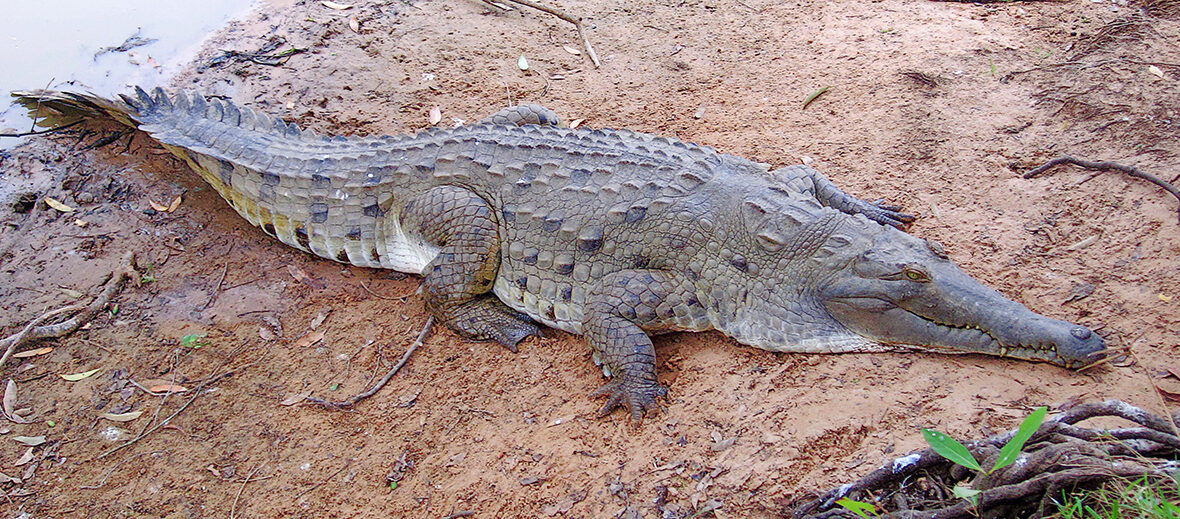
The Orinoco crocodile has no subspecies, but does come in 3 colorations: amarillo (light tan), mariposo (greyish-green), and negro (dark grey). These crocodilians can be found in Colombia and Venezuela in and around the Orinoco River basin. Seeing as they prefer slower moving or still water, when the rainy season comes and the water levels rise, these crocs will retreat to neighboring lakes and ponds. Due to overfishing, hunting, trapping, and habitat destruction these crocodilians are listed as Critically Endangered. Sadly, there are only an estimated 250 +/- remaining in the wild, to date.
First the Stats…
Scientific name: Crocodylus intermedius
Weight: Up to 840 lbs.
Length: Up to 13.5 feet
Lifespan: Up to 80 years
Now on to the Facts!
1.) Dwelling in a dominance hierarchy, these social crocs establish their rank by acts of defensiveness.
2.) A group of crocodiles is called a bask, float, congregation, or nest.
3.) Orinoco crocodiles are nocturnal (active at night).
4.) The Orinoco is considered an extremely defensive crocodile species.
5.) While cumbersome on land, they move with the greatest of ease in the water. They use their webbed feet and strong tails to propel themselves in the water.
But wait, there’s more on the Orinoco crocodile!
6.) Birds, fish, small mammals, and capybaras are on the menu, for adults. While juveniles go after insects, snails, crustaceans, and fish.
7.) Juveniles are preyed on by anacondas, American black vultures, caimans, tegu lizards, coatis, jaguars, and others. Adults have no natural predators, sans humans.
Did you know…?
These crocs are the largest predators in South America.
8.) Like other crocs, they are polygynous (1 male mates with multiple females).
9.) Mating season lasts from January – February, during the dry season.
10.) Females lay up to 70 eggs, in a sandy nest. The eggs incubate in up to 90 days.
But wait, there’s still more on the Orinoco crocodile!
11.) Once ready to hatch, the young will emit chirping sounds that alert mom to uncover the eggs. She will also sometimes pick up eggs in her mouth and gently crack open the eggs, to better allow the hatchlings to escape the egg.
12.) Females protect their young for up to 3 years.
Did you know…?
Orinoco crocodiles have been around an estimated 240 million years.
13.) The female protects her young for so long due to the fact that cannibalism exists with these and other crocodilians.
14.) These crocs have approximately 68 teeth.
15.) When eating, crocodilians gulp in lots of air. Some of this air finds its way into their tear ducts. Forcing them to tear up. Giving way to the old adage “Crocodile tears” (insincere form of crying).
Now a Short Orinoco Crocodile Video!
Be sure to share & comment below! Also, check out the Critter Science YouTube channel. Videos added frequently!
Want to suggest a critter for me to write about? Let me know here.



